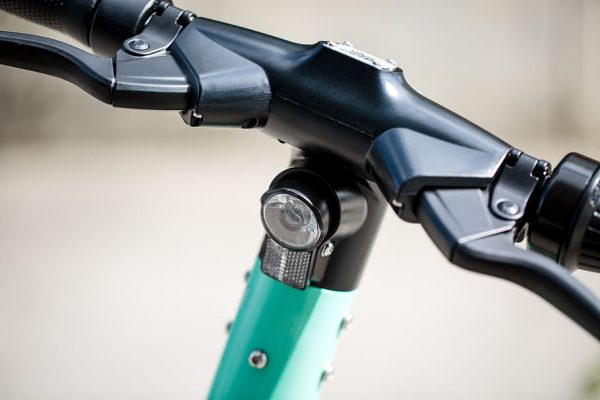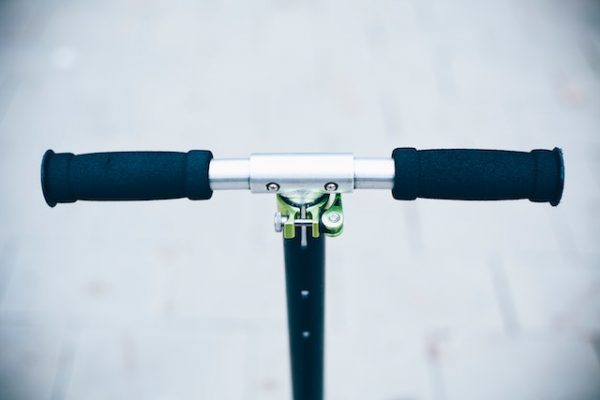Riding a scooter provides a thrilling sense of freedom and adventure, zipping through the urban landscape with the wind in your hair. Yet, for all the exhilaration it brings, ensuring your safety and comfort on the road is of paramount importance. One often-overlooked aspect that significantly impacts your riding experience is the proper modification of your scooter’s grips.
Mastering the art of handlebar modification is not just about achieving an ideal riding posture but also about fostering a deeper connection with your two-wheeled companion. A comfortable and secure grip enhances your control over the scooter, while proper positioning minimizes the risk of strain or accidents during your journey.
In this comprehensive guide, we will walk you through the step-by-step process of adjusting your scooter’s grips to create a personalized and ergonomic setup. Whether you’re a seasoned rider or a beginner exploring the world of scooting, our tips and insights will empower you to optimize your riding experience.
Join us as we delve into the intricacies of handlebar modification, exploring different mechanisms, and uncovering the secrets to achieving a comfortable and safe ride. Embrace the joy of effortless gliding on your scooter, knowing that you’ve fine-tuned every detail to embark on an unforgettable adventure with confidence and tranquility. Let’s get started on this journey toward enhanced comfort and safety, one handlebar modification at a time.

Key Takeaways
- Proper handlebar modification enhances comfort and reduces strain during rides.
- Well-adjusted grips provide better steering control, improving maneuverability.
- A balanced and stable scooter reduces the risk of wobbling or losing control.
- Adjusted grips offer clear visibility and awareness of the road and traffic.
- Personalized handlebar modifications cater to individual preferences and riding styles.
- Regular modifications help prevent injuries and maintain long-term riding enjoyment.
- Follow the manufacturer’s guidelines for specific handlebar modification requirements.
- Inspect the tightness of bolts or screws regularly to ensure grips remain secure.
Why Is There A Need To Adjust Scooter’s Handlebars?
Adjusting a scooter’s grips is essential for several important reasons, all of which contribute to the rider’s comfort, safety, and overall riding experience. Here are the main reasons why handlebar modification is necessary:
Ergonomics And Comfort
Grips that are not properly adjusted can lead to discomfort and strain during rides. An ideal handlebar height and angle allow the rider to maintain a natural and relaxed posture, reducing the risk of fatigue and body aches. Customizing the handlebars to fit your body’s proportions ensures a comfortable and enjoyable ride, even during long journeys.
Steering Control
Correctly adjusted grips enhance the rider’s control over the scooter. Improperly aligned or misaligned grips may lead to unresponsive steering, making it challenging to maneuver the scooter effectively, especially in tight or unexpected situations. Precise steering control is crucial for avoiding obstacles, navigating turns, and maintaining stability at varying speeds.
Safety And Balance
When grips are set at the right height and angle, it promotes better balance while riding. A well-balanced scooter is more stable, reducing the risk of wobbling or losing control. This is particularly crucial when riding on uneven surfaces, encountering bumps, or navigating through traffic.
Visibility And Awareness
Proper handlebar modification allows the rider to maintain an optimal line of sight. Clear visibility of the road ahead and surrounding traffic enhances awareness and helps the rider respond quickly to potential hazards or changes in traffic conditions.
Riding Efficiency
Well-adjusted grips improve riding efficiency by minimizing unnecessary movements and energy wastage. A comfortable riding position allows the rider to focus on the road and maintain a consistent pace, ultimately enhancing the overall riding experience.
Personalization
Each rider has unique preferences and physical characteristics. Handlebar modification allows riders to personalize their scooters to suit their specific needs and riding style. Whether you prefer a more upright or leaned-forward position, handlebar adjustments cater to individual comfort levels.
Preventing Injuries
Riding with poorly adjusted grips can lead to repetitive stress injuries or strain on wrists, shoulders, and back. Regularly adjusting the grips ensures that the scooter is ergonomically optimized, reducing the risk of long-term injuries caused by poor riding posture.

How To Adjust Your Scooters’ Handlebars?
Adjusting your scooter’s grips properly is crucial for both comfort and safety during your rides. Here’s a step-by-step guide to help you achieve a comfortable and safe riding position:
Tools You May Need
- Allen wrenches
- Screwdriver
Step 1: Safety First
Before you begin, make sure your scooter is parked on a level surface and the engine is turned off. This prevents any accidental movement or injury during the modification process.
Step 2: Locate the Handlebar Adjustment Mechanism
The handlebar modification mechanism may vary depending on the type of scooter you have. Generally, there are two common types:
a. Threaded Stem: Some scooters have a threaded stem that connects the grips to the steering tube. You will need an Allen wrench to loosen the bolt or screws that secure the stem.
b. Quick Release Lever: Other scooters may have a quick-release lever that allows for easy handlebar height modification without the need for tools.
Step 3: Adjusting The Height
Whether you have a threaded stem or a quick-release lever, follow these instructions:
a. Threaded Stem Modification:
- Loosen the bolt(s) or screws on the stem with the appropriate Allen wrench.
- Gently raise or lower the grips to the desired height.
- Make sure the grips are aligned with the front wheel to ensure proper steering control.
- Tighten the bolt(s) or screws securely to lock the grips in place.
b. Quick Release Lever Modification:
- Flip open the quick-release lever to unlock the handlebar height modification.
- Raise or lower the grips to the desired height.
- Align the grips with the front wheel.
- Close the quick-release lever securely to lock the grips in place.
Step 4: Adjusting The Angle
Some scooters also allow you to adjust the handlebar angle for added comfort. To adjust the angle:
- Locate the bolts or screws that secure the handlebar clamp.
- Loosen them slightly to allow the grips to rotate.
- Adjust the grips to a comfortable angle for your riding style.
- Tighten the bolts or screws securely to lock the grips in the new position.
Step 5: Test Your Adjustment
After making the necessary modifications, take your scooter for a test ride in a safe and open area. Pay attention to the comfort of your grip and wrist position. If you feel any discomfort or instability, make further modifications as needed.
Final Tips:
- Avoid setting the grips too high or too low, as extreme positions can compromise your control and safety.
- Always follow the manufacturer’s guidelines for handlebar modifications, as some scooters may have specific limitations or requirements.
- Regularly check the tightness of bolts or screws after modifications to ensure they remain secure during rides.
By following these steps, you can achieve a comfortable and safe riding position on your scooter, reducing the risk of discomfort and accidents.

Conclusion
Mastering the art of handlebar modification in scooters is a vital step toward creating a safe, comfortable, and enjoyable riding experience. By taking the time to personalize your scooter’s grips to match your body’s proportions and riding style, you can significantly enhance your control, balance, and overall safety on the road.
A well-adjusted set of grips not only promotes ergonomic riding posture, reducing the risk of strain and fatigue but also empowers you to maneuver through city streets with confidence and ease. The ability to swiftly respond to changing traffic conditions and obstacles becomes second nature when your scooter is finely tuned to your preferences.
Moreover, the benefits of handlebar modification extend beyond immediate comfort and control. By preventing potential injuries caused by poor riding posture, you can maintain your passion for scooting over the long term, ensuring that every ride remains a joyous adventure.
Remember always to refer to your scooter’s manufacturer guidelines for handlebar modifications, as some models may have specific requirements or limitations. Regularly inspect the tightness of bolts or screws after making modifications, ensuring that your grips remain securely in place during your rides.
So, whether you’re a seasoned rider seeking to optimize your scooter’s performance or a newcomer eager to embark on this thrilling journey, don’t overlook the significance of handlebar modification. Embrace the process with care and attention, and you’ll discover how these small modifications can make a world of difference in creating a truly unforgettable ride. With a well-adjusted scooter, you’re poised to explore the world with newfound confidence, traversing the urban landscape and beyond, knowing that every turn and twist will be met with comfort and safety. Happy scooting!
Frequently Asked Questions (FAQs)
